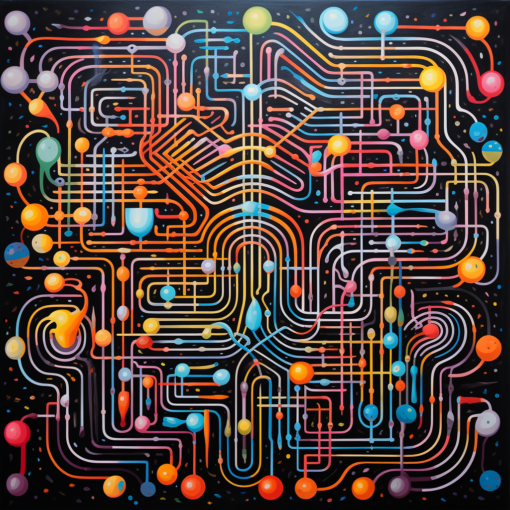Ah, dear reader! Once again, we find ourselves poised on the precipice of a journey into the intriguing labyrinth of the human mind. Today, let us tread lightly into the realm of empathy, a faculty often considered to be the touchstone of our shared humanity.
Empathy, in its simplest definition, is our ability to understand and share the feelings of another. It is the invisible thread that binds us together, a silent whisper echoing the emotions of those around us. But is it an inherent characteristic of being human, or is it something we learn?
The debate among scholars rages on, but one thing is certain: empathy is not exclusive to us humans. Many species in the animal kingdom have shown evidence of empathetic behaviour. A mother elephant, for instance, mourns the loss of her calf. A pack of wolves shares the joy of a successful hunt. Even rats have been known to free their trapped brethren before securing a tasty chocolate treat for themselves!
Empathy allows us to navigate our social world, to interpret subtle cues and signals, to respond appropriately to the emotions of others. It fuels our compassion and drives us to help those in need, often at the expense of our own comfort or safety. In essence, empathy is the foundation of our morality, the cornerstone of our societal structures.
But empathy is a double-edged sword. As much as it enables us to share joy, love, and happiness, it also compels us to share pain, sorrow, and despair. To be empathetic is to leave ourselves open, vulnerable to the full spectrum of human emotion. It is a burden as much as it is a gift.
Recent research in the field of neuroscience has shed some light on the workings of empathy. The discovery of mirror neurons, a type of brain cell that responds equally when we perform an action and when we witness someone else perform the same action, has been a breakthrough in this regard. These neurons, it seems, are the biological basis of our empathetic responses.
Yet, the mystery of empathy is far from solved. How do we manage to step outside our own experiences, to imagine the feelings of others, to share in their joy, their sorrow, their fear, their hope? This, dear reader, is a question that may never be fully answered, a riddle wrapped in the enigma of our shared human experience.
So let us celebrate empathy, in all its complexity and contradiction. Let us strive to understand one another, to share in each other’s triumphs and tribulations, to weave a tapestry of shared experience that is rich, diverse, and profoundly human. For in the end, empathy is not just about feeling; it’s about understanding. And understanding, as we well know, is the first step towards love.
Until next time, dear reader, may your heart be filled with understanding, your mind with curiosity, and your life with shared joy.
Yours in perpetual wonder,
Percival

Further Reading:
- “The Science of Empathy” – Psychology Today A comprehensive article that explores the psychological aspects of empathy, explaining its components, and discussing why it matters in our everyday lives.
- “The Empathic Brain: How the Discovery of Mirror Neurons Changes our Understanding of Human Nature” – Scientific American An insightful article discussing the role of mirror neurons in empathy, presenting a significant leap in our understanding of how we connect with others.
- “Empathy: Its ultimate and proximate bases” – Behavioral and Brain Sciences A scholarly paper that delves into the evolutionary and biological basis of empathy.





6 thoughts on “The Enigma of Empathy: Understanding the Power of Shared Emotion”
I don’t think the title of your article matches the content lol. Just kidding, mainly because I had some doubts after reading the article.
Thanks for sharing. I read many of your blog posts, cool, your blog is very good.
I don’t think the title of your article matches the content lol. Just kidding, mainly because I had some doubts after reading the article.
Thanks for sharing. I read many of your blog posts, cool, your blog is very good.
Can you be more specific about the content of your article? After reading it, I still have some doubts. Hope you can help me. https://www.binance.info/bn/register-person?ref=UM6SMJM3
Can you be more specific about the content of your article? After reading it, I still have some doubts. Hope you can help me.